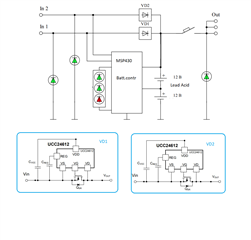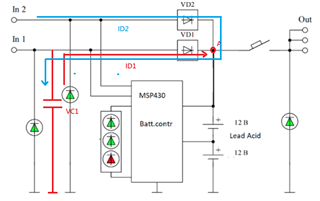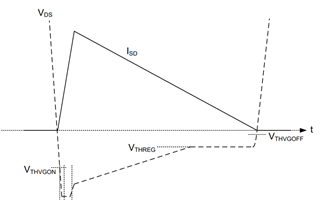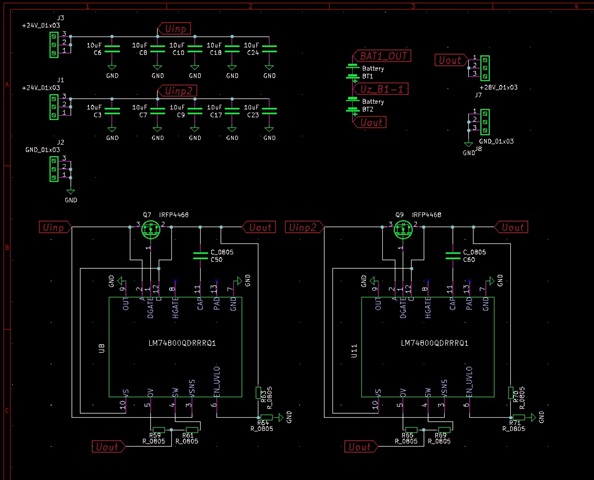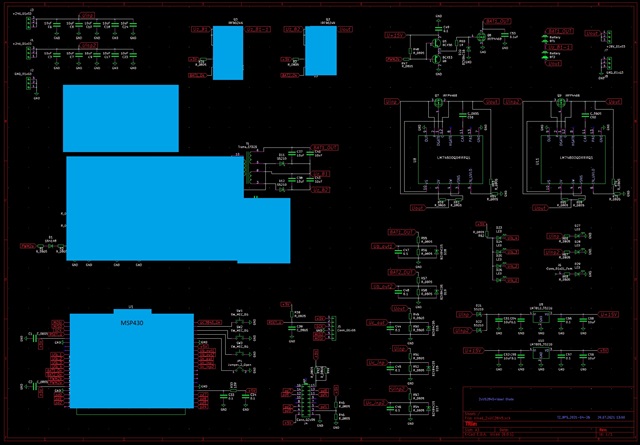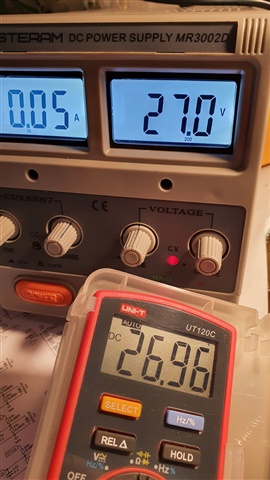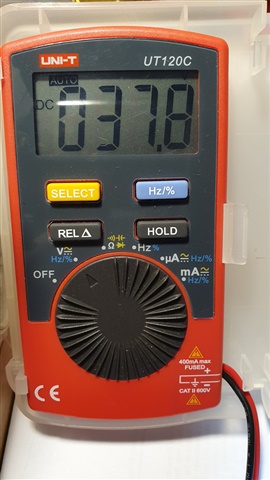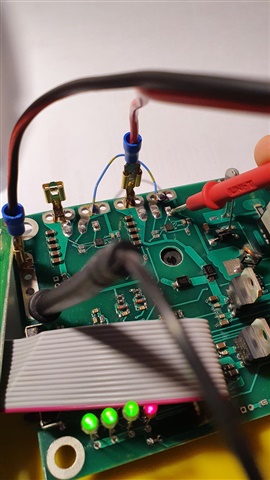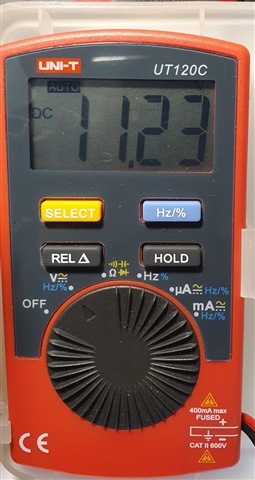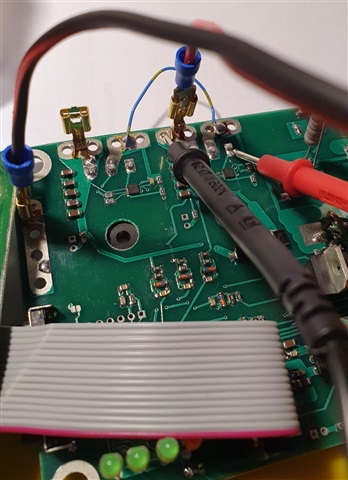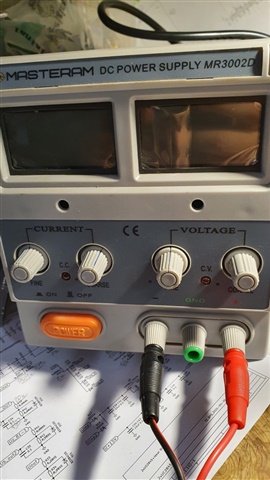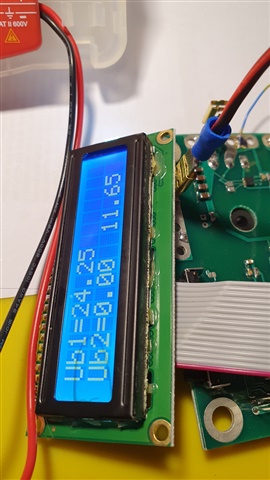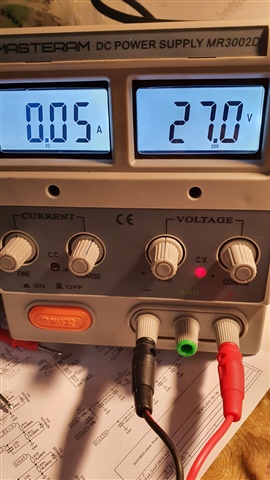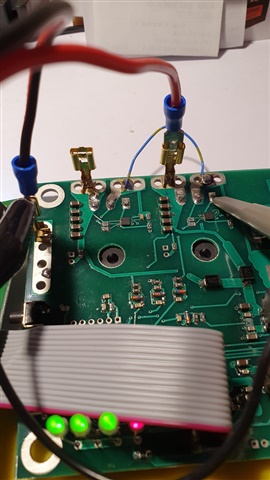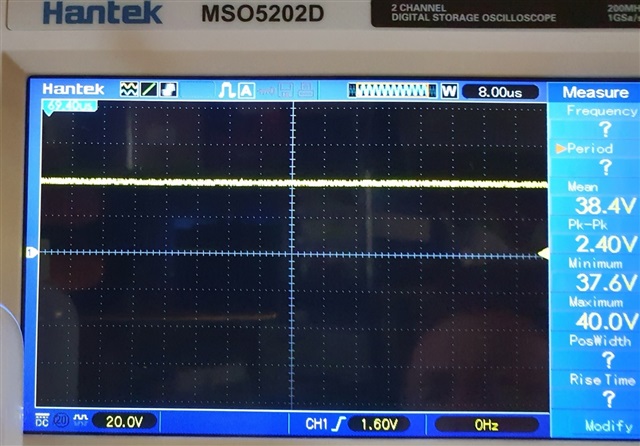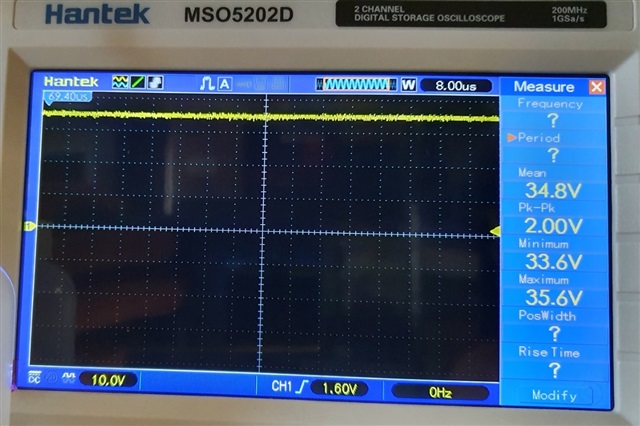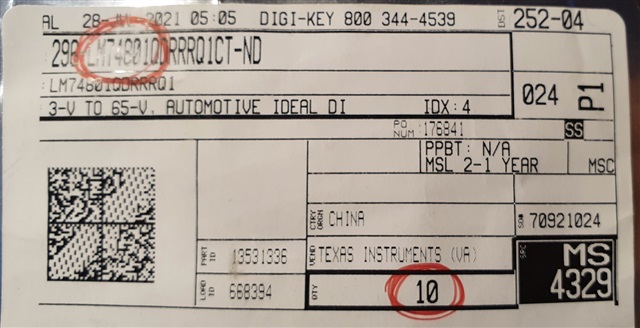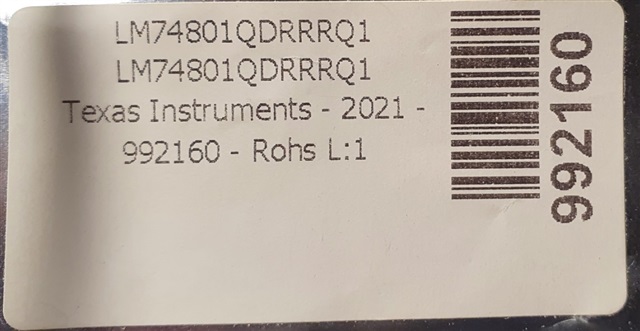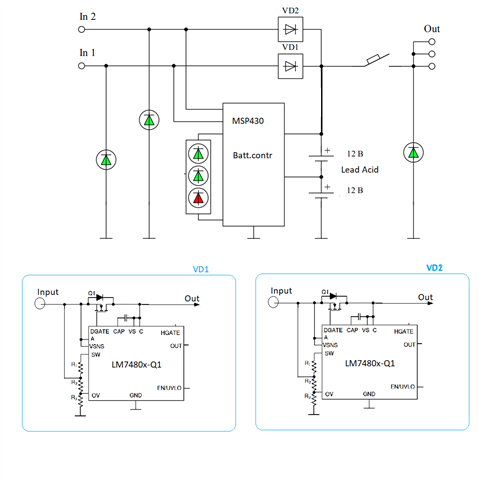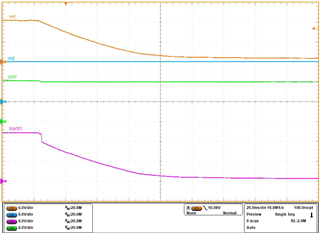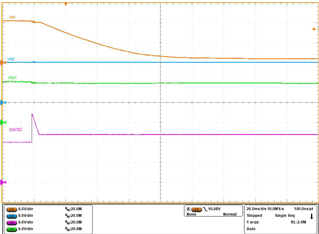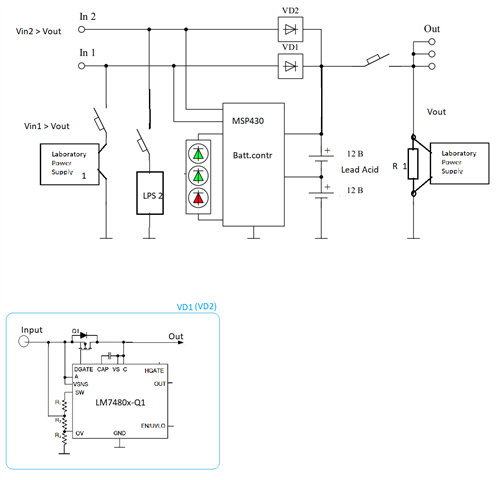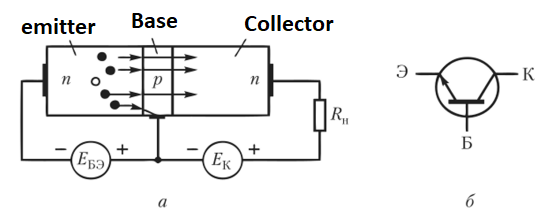Other Parts Discussed in Thread: LM7480, , LM74800-Q1, LM74700-Q1, LM74800EVM-CD, TPS2411
I need to develop an uninterruptible DC power supply circuit, with a voltage of 20-30 volts. The scheme is shown in the figure.
The problem is that I do not have a pulsed power supply, only direct current. The current is assumed to be 2-25Amps, so the use of Schottky diodes will lead to large heat losses. That's why I chose the "ideal diode" solution.
But then the problems started ... Initially, I assembled the circuit on the LM74700 ( LM7480 ) and the circuit works fine, but only if there are no batteries at the output (see my diagram). The battery has its own voltage, and the circuit leaves the field-effect transistors on even if power is lost at input 1 or 2. If power is lost at input 1 (for example), there is still voltage at input 2, because the circuit “sees” the voltage that it itself broadcasts from its output through an open field effect transistor. There is a danger of potential equation currents flowing between input 1 and input 2 in case of incomplete loss of voltage, or even battery discharge on the input 1 or input 2 circuit.
So I want to use the ucc24612 (as in my schematic) as an "ideal diode".
I did not find a similar circuit in the datasheets, and did not find a mention that this will only work on direct current.
I don't really understand how the ucc24612 works using just one power wire.
If I connect power to the ucc24612 from the output of the circuit (where I have batteries) then I get the same problem: the FET will always be open because the batteries transmit their voltage through the open transistor to input 1 (2).
I ask you to help me understand and how can I solve my problem.